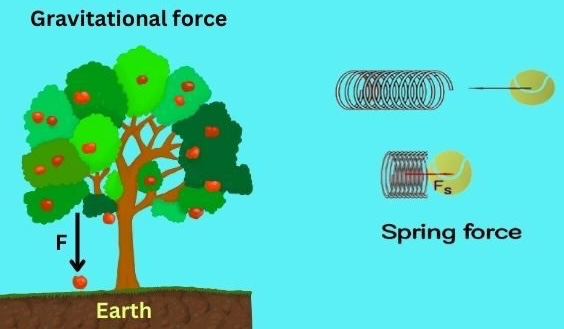Day 13 - Conservative Forces#

Announcements#
HW 4 is due Friday
Friday’s Class: We will work HW 4 Exercise 4 together + Q&A
Friday Office Hours (14:00-16:00; 1248 BPS)
Midterm 1 is available now
We will talk about it Monday (come with questions)
There will be no office hours on Oct 3rd (DC traveling)
Seminars this week#
WEDNESDAY, September 24, 2025#
Astronomy Seminar, 1:30 pm, 1400 BPS, In Person and Zoom, Host~ Speaker: Kosuke Namekata, NAOJ Title: Zoom Link: https://msu.zoom.us/j/887295421?pwd=N1NFb0tVU29JL2FFSkk0cStpanR3UT09 Meeting ID: 887-295-421 Passcode: 002454
Seminars this week#
THURSDAY, September 25, 2025 (Promotion Talk!)#
Colloquium, 3:30 pm, 1415 BPS, in person and zoom. Host ~
Refreshments and social half-hour in BPS 1400 starting at 3 pm
Speaker: Wolfgang Kerzendorf, MSU - (PTRC)
Title: Calibrating Stellar Explosions as Probes of the Evolving Universe
Background:
For more information and to schedule time with the speaker, see the colloquium calendar at https://pa.msu.edu/news-events-seminars/colloquium-schedule.aspx
Zoom Link: https://msu.zoom.us/j/94951062663
Password: 2002 Or complete link: https://msu.zoom.us/j/94951062663?pwd=c48uM25P9UsRVuR74rkOioOWgpoxgC.1
Seminars this week#
FRIDAY, September 26, 2025#
QuIC Seminar, 12:30pm, -1:30pm, 1300 BPS, In Person
Speaker: Alexei Bazavov, MSU
Title: Efficient State Preparation for the Schwinger Model
Full Scheule is at: https://sites.google.com/msu.edu/quic-seminar/
For more information, reach out to Ryan LaRose
Seminars this week#
FRIDAY, September 26, 2025#
IReNA Online Seminar, 2:00 pm, In Person and Zoom, FRIB 2025 Nuclear Conference Room, Light refreshments will be served at 1:50pm. Hosted by: Steffen Turkat (TU Dresden, Germany) Speaker: Dominik Koll, HZDR, Germany Title: The search for freshly synthesized radionuclides from stellar explosions on Earth Zoom Link: https://msu.zoom.us/j/827950260 Password: JINA
This Week’s Goals#
Remind ourselves of the concept of energy and energy conservation
Apply the conservation of energy to a variety of systems
Develop the mathematical tools to analyze energy conservation in more complex systems
Connect our new understanding of energy conservation to our previous work on forces and motion
Reminders#
Energy is conserved in every process; our choice of system determines how we account for energy.
Closed, isolated systems are often the simplest to analyze.
A point particle is a model that allows us to ignore the internal structure of an object.
The Work-Energy Theorem is just a statement of the conservation of energy for a point particle.
Conservation of Energy#
General Principle: Energy is conserved in every process.
Isolated System: No work or heat is exchanged with the surroundings.
Point Particle: A model that allows us to ignore the internal structure of an object.
The Potential Energy Function#
Simple Harmonic Oscillator (\(F_{s} = -kx\))#
Clicker Question 13-1#
The gravitation force near the Earth’s surface is given by \(\vec{F} = -mg\hat{z}\). What is the potential energy function for this force? Choose \(+\hat{z}\) to be up.
\(U = -mgz\)
\(U = mgz\)
\(U = -mgz + U_0\)
\(U = mgz + U_0\)
None of the above
Clicker Question 13-2#
A model for a lattice chain acting on a electron is given by \(F(x) = - F_0 \sin\left(\dfrac{2\pi x}{b}\right)\). What is the potential energy function for this force?
\(U = -F_0 \cos\left(\dfrac{2\pi x}{b}\right)\)
\(U = F_0 \cos\left(\dfrac{2\pi x}{b}\right)\)
\(U = -\dfrac{F_0 b}{2\pi} \cos\left(\dfrac{2\pi x}{b}\right)\)
\(U = \dfrac{F_0 b}{2\pi} \cos\left(\dfrac{2\pi x}{b}\right)\)
None of the above
Clicker Question 13-3#
I say “Stokes’ Theorem” and you say…

HELL YEAH BROTHER 🤘
I’m not sure what that is 🤷
DEAR GOD WHY?!?! 😭
Clicker Question 13-4#
The curl of a vector field is given by \(\nabla \times \vec{F}\). If the curl of a vector field is zero, what can we say about the vector field?
It is a conservative force
It is a non-conservative force
It is a constant force
It is a force that does no work
Clicker Question 13-5#
Which of the following fields have no divergence?
 B.
B. 
A
B
Both A and B
Neither A nor B
Clicker Question 13-5#
Which of the following fields have no curl?
 B.
B. 
A
B
Both A and B
Neither A nor B
Clicker Question 13-6#
Consider a vector field with zero curl: \(\nabla \times \vec{F} = 0\). Which of the following statements is true?
The field is conservative
\(\int \nabla \times \vec{F} \cdot d\vec{A} = 0\)
\(\oint \vec{F} \cdot d\vec{r} \neq 0\)
\(\vec{F}\) is the gradient of some scalar function, e.g., \(\vec{F} = - \nabla U\)
Some combination of the above
